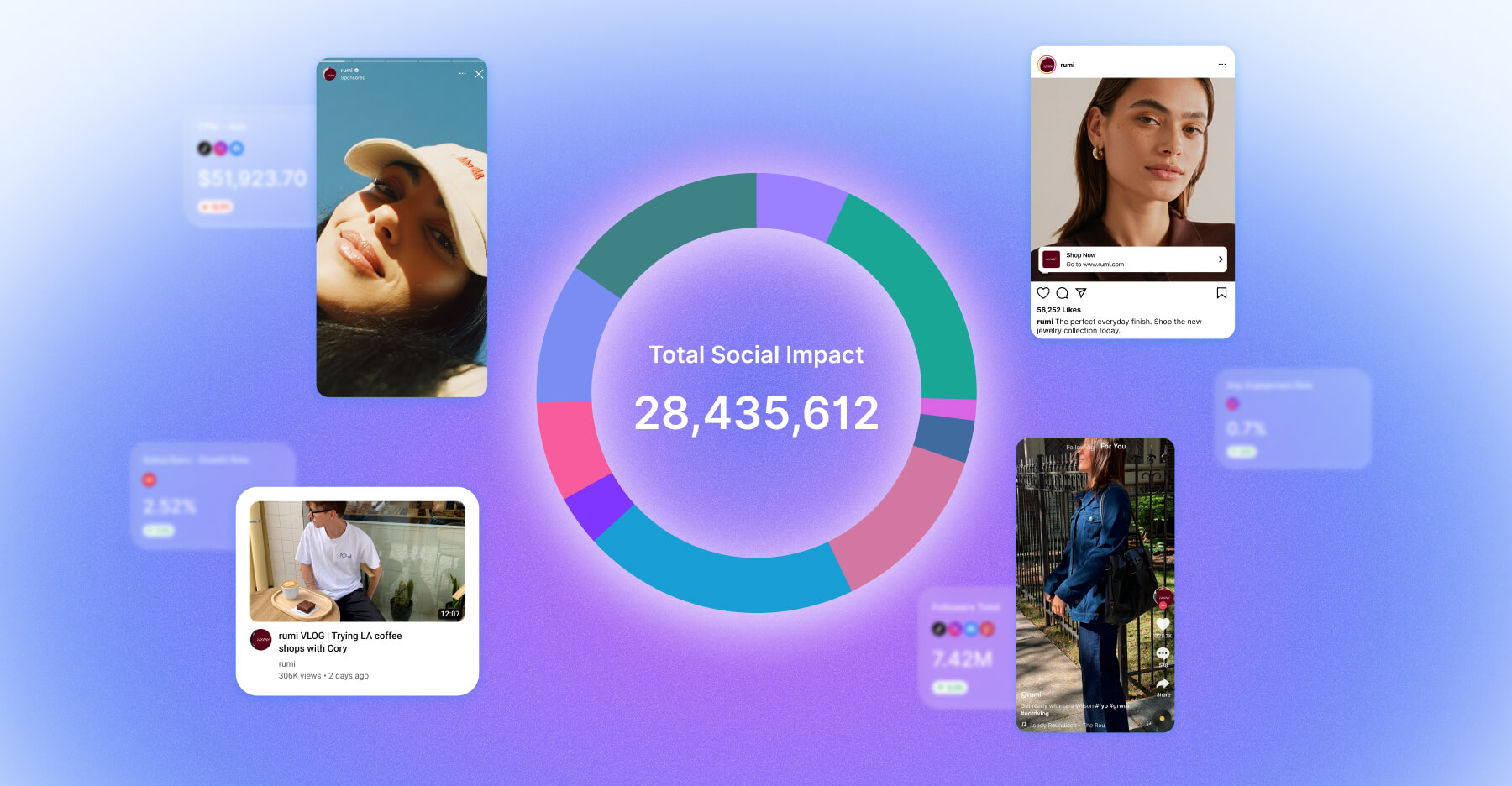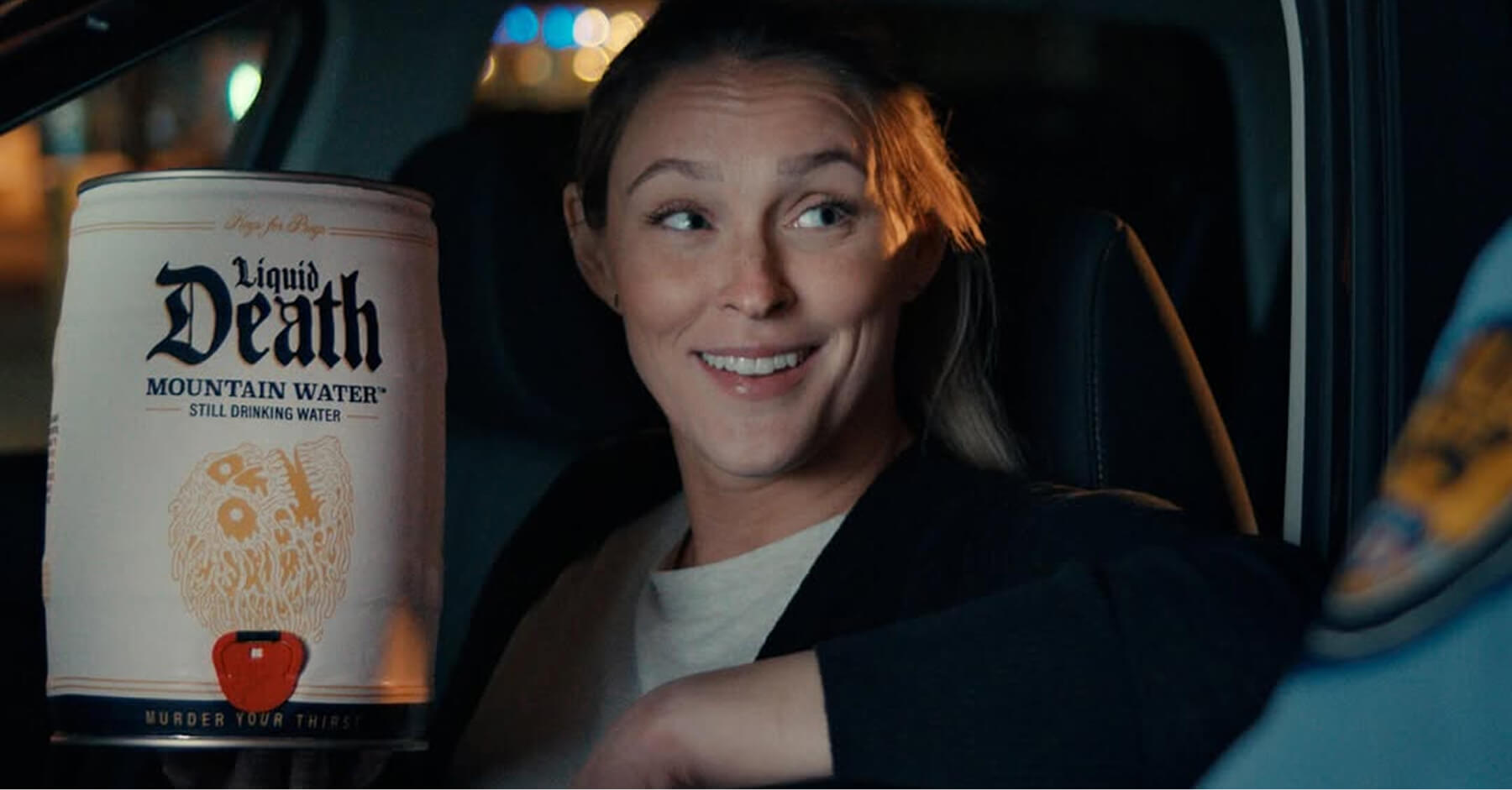The Effectiveness Rate of Photo vs. Video on Social Media
Understand your content's full impact with Effectiveness Rate.

Contents
How Does Dash Social Measure Engagement Rate?How Do You Measure the Success of a Video?Effectiveness Rate: Photos vs. Videos Effectiveness Rate Across Industries Effectiveness Rate Benchmarks by IndustryOverall: Industry-Wide Effectiveness RateSharpen Your Social Strategy With Dash SocialEffectiveness Rate FAQsThe Effectiveness Rate hits the measurement sweet spot for brands who value every interaction with their content and want hard data to see what inspires that action. Here is how to calculate Effectiveness Rate:
- Effectiveness Rate: (Likes + Comments + Saves + Shares) / Reach
By utilizing reach, brands can understand how content performs without skewed numbers due to a high follower count and lower reach. It is important to consider these metrics holistically and the shift from social media to social entertainment. Effectiveness Rate illuminates even your posts that few people see. By including reach, brands can understand if the content resonates with those who can see it.
If you analyze performance only from an engagement perspective, it might appear that the content underperformed — even when it didn’t. Leading brands like CB2 use Effectiveness Rates alongside engagement metrics in their social media reporting to gain an informed and complete view of content performance and incorporate that learning into their future social media strategies.
Key Takeaways:
- Effectiveness Rate shows how well content performs with your actual audience by measuring total interactions against reach.
- Video vs. Photo: Videos often see higher effectiveness due to view weighting, while photos and carousels maintain strong engagement.
- Smart Measurement: Combine Effectiveness Rate with engagement and Entertainment Score for a full view of content success.
How Does Dash Social Measure Engagement Rate?
Engagement Rates measure how much your audience interacts with, is involved with, and is devoted to your content. Dash Social measures engagement rate by calculating total engagements per post (think likes, comments and shares), divided by reach and multiplied by 100. Account engagement is measured by your total engagement, divided by your follower count, and multiplied by 100. The main difference is the inclusion of reach for individual post engagement and followers for total account engagement.
- Engagement Rate calculation for specific posts is: Interactions / Reach X 100
- Engagement Rate calculation for accounts is: Interactions / Followers X 100
How Do You Measure the Success of a Video?
Video has seen impressive growth on social, with more short-form video formats being added to channels all the time.
It is, however, one of the trickier forms of content to measure correctly and accurately. Audiences engage with video differently than photos, so expecting your video content to perform the same as photos can lead brands down a path that needs more strategic opportunities. When looking at an image, a user quickly intakes the information at a glance and then chooses how to engage with it, i.e., like, comment or save. When a video comes across their screen, the primary action is now watching the video rather than engaging immediately. That is why video views are the primary action and likes, comments and saves are the secondary actions when users go above and beyond to interact. These video-specific attributes are why many brands lean on effectiveness as their primary metric to understand video performance. Weighting video views equal to likes, comments and saves is what makes effectiveness such a strong indicator of video success.
This is why Effectiveness Rate is an excellent indicator of video success. When combined with Entertainment Score, brands get a robust picture that shows precisely how impactful their creative content is. The Entertainment Score measures your engagement and retention rates so marketers can go beyond momentary performance and into long term trends, patterns and wins. They can also see how it contributes to overall audience engagement, retention and growth.
So, what’s the difference between Effectiveness Rate and Entertainment Score? Effectiveness Rate weighs the impact of multiple quantitative KPIs — likes, reach, views, and engagement. Conversely, Entertainment Score indicates your qualitative performance — how many people engage and watch the content?
Effectiveness Rate: Photos vs. Videos
It can take time to figure out how to measure content success. When diving into content performance, the team at Dash Social has always been proponents of social content segmentation, and our community of marketers has backed that up, with Boards repeatedly coming up as one of their favorite tools. Content segmentation is crucial when measuring and even more so when looking at effectiveness. Because video views are part of the calculation, this typically leads to lower Effectiveness Rates for photos and higher rates, which you’ll see in action in the benchmarks below. By continually segmenting photo and video effectiveness, you can compare apples to apples and set more accurate goals.
Effectiveness Rate Across Industries
When incorporating a new metric, it’s important to have context on where your brand is currently sitting and benchmarks for how your specific industry performs on social media. Industries like Beauty, an early adopter of video, and industries like CPG, Food and Beverage, Travel and Media and Publishing industries, whose messaging lends itself well to video, will have higher video Effectiveness Rates (see below).
While the Retail and Fashion and Luxury industries' overall numbers are lower for photo and carousels, industries like food and beverage are benefitting from successful photo and carousel content, as evidenced by its 5.3% Effectiveness Rate.
You should consider these metrics when setting goals and judging the success of content. Ensure you view your effectiveness numbers in the context of your industry performance and how the numbers are trending.
For example, if you’re noticing a 0.75% drop in effectiveness over the last quarter, but your industry as a whole saw a 1.5% drop, that information is essential for your quarterly reporting.
Across Q2 2025, photos and carousels outpaced Reels and video by a fair margin, with some industries brands seeing nearly five times the effectiveness through photos and carousels. Meanwhile, certain industries like media, CPG, and food and beverage are setting the bar high with strong engagement, while retail and fashion continue to face challenges, likely due to highly saturated social spaces and increased competition.
Below, we break down the benchmarks by industry to help marketers better understand where they stand and how to adjust strategies to hit that critical 2-5% range for photos and 7-54% for videos.
Effectiveness Rate Benchmarks by Industry
We looked at the average Effectiveness Rate for each month during Q3 of 2025 to identify industry trends for photo and video performance. These highlight nine key industries:
- Beauty
- Retail
- Media
- Publishing
- Fashion
- Luxury
- CPG
- Home
- Food and Beverage
- Travel
Marketers should aim to hit the general performance range between 3-5% for photos and carousels and 2.8-4% for videos, with some fluctuation depending on your specific industry.
Overall: Industry-Wide Effectiveness Rate
Here is the following performance for overall photo and video Effectiveness Rate across Q3 2025:
- Average Q3 2025 Photo and Carousel Effectiveness Rate: 4.4%
- Average Q3 2025 Video Effectiveness Rate: 3.9%
Beauty Effectiveness Rate
Here is the following performance change for beauty industry photo and video Effectiveness Rate across Q2 2025:
- Average Q2 2025 Photo and Carousel Effectiveness Rate: 5.1%
- Average Q2 2025 Video Effectiveness Rate: 4.2%
CPG Effectiveness Rate
Here is the following performance change for the CPG industry photo and video Effectiveness Rate across Q2 2025:
- Average Q2 2025 Photo and Carousel Effectiveness Rate: 5.1%
- Average Q2 2025 Video and Reels Effectiveness Rate: 4.7%
Retail Effectiveness Rate
Here is the following performance change for the retail industry photo and video Effectiveness Rate across Q2 2025:
- Average Q2 2025 Photo and Carousel Effectiveness Rate: 3.2%
- Average Q2 2025 Video Effectiveness Rate: 3.1%
Fashion Effectiveness Rate
Here is the following performance change for the fashion industry photo and video Effectiveness Rate across Q2 2025:
- Average Q2 2025 Photo and Carousel Effectiveness Rate: 3.2%
- Average Q2 2025 Video Effectiveness Rate: 2.8%
Luxury Effectiveness Rate
Here is the following performance change for luxury industry photo and video Effectiveness Rate across Q2 2025:
- Average Q2 2025 Photo and Carousel Effectiveness Rate: 4.3%
- Average Q2 2025 Video Effectiveness Rate: 3.7%
Media Effectiveness Rate
Here is the following performance change for the media industry photo and video Effectiveness Rate across Q2 2025:
- Average Q2 2025 Photo and Carousel Effectiveness Rate: 4.0%
- Average Q2 2025 Video Effectiveness Rate: 4.2%
Publishing Effectiveness Rate
Here is the following performance change for the publishing industry photo and video Effectiveness Rate across Q2 2025:
- Average Q2 2025 Photo and Carousel Effectiveness Rate: 3.98%
- Average Q2 2025 Video Effectiveness Rate: 3.7%
Home Effectiveness Rate
Here is the following performance change for the home industry photo and video Effectiveness Rate across Q2 2025:
- Average Q2 2025 Photo and Carousel Effectiveness Rate: 4.0%
- Average Q2 2025 Video Effectiveness Rate: 3.3%
Food and Beverage Effectiveness Rate
Here is the following performance change for the food and beverage industry photo and video Effectiveness Rate across Q2 2025:
- Average Q2 2025 Photo and Carousel Effectiveness Rate: 4.4%
- Average Q2 2025 Video Effectiveness Rate: 4.6%
Travel Effectiveness Rate
Here is the following performance change for the travel industry photo and video Effectiveness Rate across Q2 2025:
- Average Q2 2025 Photo and Carousel Effectiveness Rate: 4.5%
- Average Q2 2025 Video Effectiveness Rate: 4.6%
Sharpen Your Social Strategy With Dash Social
The Effectiveness Rate is a powerful metric that keeps up with the demanding nature of content measurement in 2025. For brands who plan to incorporate video into their strategy (or already are), the Effectiveness Rate will quickly become your best friend.
Use content segmentation for your best-performing photos and videos and keeping track of industry benchmarks to gauge your brand’s performance properly and set better, more well-informed goals.

Unlock Your Free Dash Social Trial
Outsmart social using powerful visual marketing tools — start your 14-day free trial, no credit card required.
Get Started TodayEffectiveness Rate FAQs
How do you measure success on social media posts?
To measure the success of social media posts, social marketers should first outline what post-specific KPIs they want to measure — a likely KPI is engagement rate, but these could include effectiveness rate, clicks, follower growth, or any other metric that helps you find success in your social strategy. For example, if your social campaign focuses on building brand awareness, you might prioritize engagement and follower growth over metrics like website clicks or purchases. Success is determined by whether or not you reach these goals. It’s also important to know that even if you don’t reach your goals, any insights are helpful for post-campaign reflection, especially when it comes time to set post goals for your new campaign.
How do you measure the success of a social campaign?
The first step when considering how to report on successful social media campaigns is to define goals in your social media strategy — this can range from reach to impressions, clicks, conversions, or whatever else makes sense in the context of your overall marketing strategy.
From there, social managers can use tools like Dash Social, platform analytics, Google Analytics, and more to track whether or not you reach your goals. It’s also important to measure these against overall performance to determine whether or not the KPIs you set for social content had a broader impact.
How do you measure the engagement of your posts?
Social marketers can measure the engagement of Instagram posts under the ‘Insights Tab’ (or the analytics tab in whatever native app you use) or with Dash's Social Media Insights or Dashboards tool to pull in multi-channel social media analytics engagement rates for posts, Reels, campaigns, and more.




